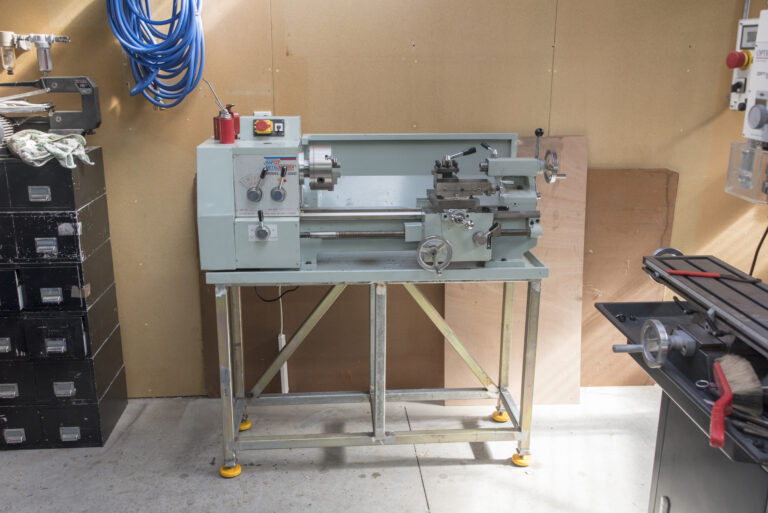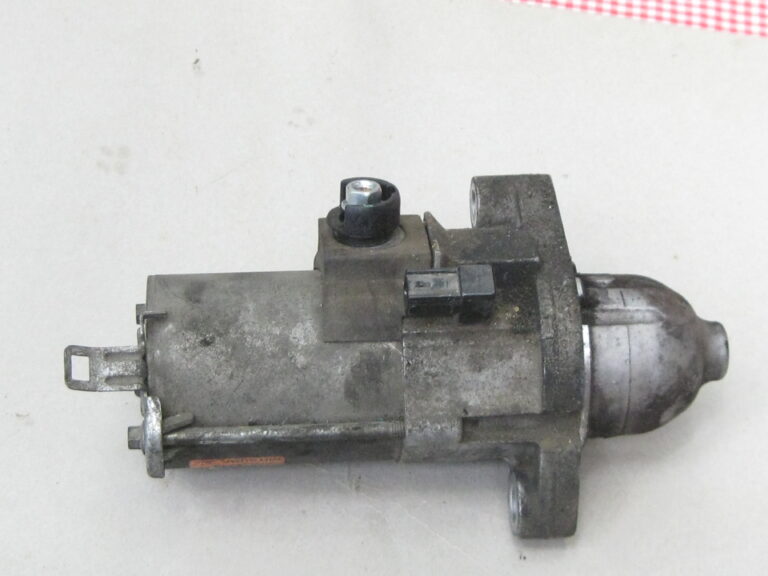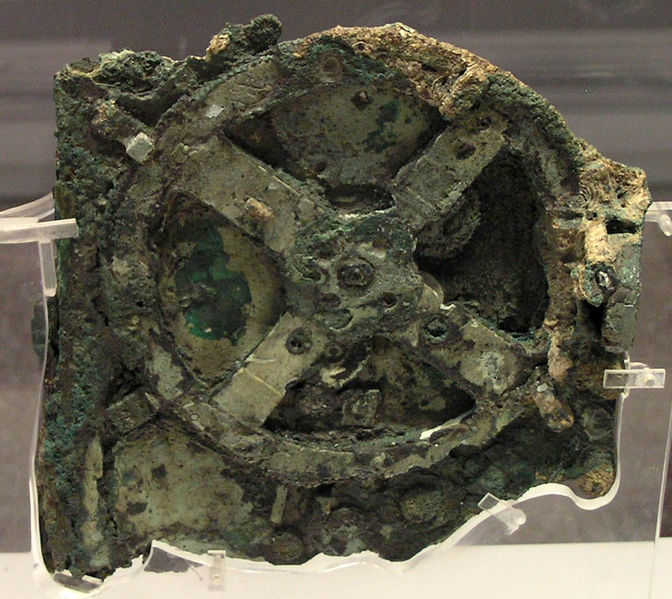How to check you have the right electrode
THE ARC WELDER is still king of the small workshop. Its versatility and low cost make it the great all-rounder in welding. However, negotiating your way through the forest of available electrodes could be daunting to the newcomer. This summary is an attempt to explain the composition of welding electrodes and demystify some of the jargon. You can now chose an electrode not just for the type of material and the size of the material to be welded but also for the welding position, be it downhand, overhead, vertical (down or up), or in the round. This is due primarily to the mix of materials controlling not just the depth of the arc and the deposition rate but also the fl uidity and setting time of the slag, the alloy type required and type of joint. It is worth checking the catalogues to find the correct rod for the process as well as the material you are welding.
Electrodes are extruded from the press at Weldwell’s Napier manufacturing plant
Rods proceeding to the driers prior to packaging
The wide variety of material compositions and the various properties of the individual ingredients have allowed many specific-function electrodes to be developed. We will make some recommendations for useful, all purpose electrodes but in general we recommend that you discuss your needs with a specialist welding supplier and consult their catalogues.
An arc welding electrode has to fulfil several functions:
1. It carries the current to melt
the parent metals;
2. It provides the filler metal for
the joint;
3. It creates the covering which
generates the gaseous shield;
4. It creates a slag that protects the weld from reaction with oxygen
or nitrogen.
The materials used for the flux coat have other functions. They ensure the optimum weld characteristics, including a stable arc, control of porosity, of splatter, control of the overheating of the deposition material and slag composition and removal. Originally, the material encasing the electrode was intended primarily to generate a protective gas shield for the welding arc. Then it was found to create ionising gases that would assist with transmission of the arc and help with AC welding where the current is continually reversing. Other additives help to deoxidise the weld metal, clean the work piece and provide the right composition of slag to protect the new weld from oxidisation. Slag also helps to ensure that the weld bead is the right contour with no undercut and, by slowing down the cooling rate, it helps with tempering the weld metal. Some additives in the coating help with alloying the weld metal and changing its metallurgic properties. For example, hardfacing electrodes have a mild steel core but include alloys in the coating to create the right composition of filler metal. Other additives help by removing impurities in the weld metal for a stronger joint. The coating on electrodes for mild steel can have as many as 12 or more different ingredients in their composition. They include:
• Cellulose, to provide a gaseous
shield with a reducing agent. The
gas shield surrounding the arc is
produced by the breakdown of
cellulose.
• Limestone, feldspar, fl uorspar
and rutile, to provide shielding gas
to protect the arc and adjust the pH
of the slag.
• Ferromanganese and
ferrosilicon, to help deoxidise
the molten weld metal and to
supplement the manganese and
silicon content of the deposited
weld metal.
• Ferrochromium,
ferromolybdenum and nickel
powder to alter the alloy content of
the weld to provide for hardening
and strengthening the steel.
• Iron or manganese oxide, to
adjust the fl uidity and properties
of the slag. Iron oxide in small
amounts helps to stabilise the arc.
• Iron powder, to increase
effi ciency by providing additional
metal to be deposited in the weld.
• Clays and gums, to provide
elasticity for extruding the plastic coating material and to help provide
strength to the coating. • Sodium silicate (water-glass)
to bind the ingredients together and
make them stick to the core wire.
The three main coating types
are rutile, basic and cellulose.
1. Rutile Rutile electrodes have coatings which contain about 50% rutile sand (titanium dioxide). This helps the electrode to provide easy striking, stable arc (the titanium helps to produce an ionising gas environment to sustain the arc), low spatter, good bead profi le and, generally, easy slag removal. Rutile electrodes can operate on both AC and DC currents. Rutile-based coatings produce a very fl uid slag that freezes quickly to protect the weld. The fl uidity and setting time of the slag determines how well the rod performs in overhead and vertical-down welding, (where the weld moves down in an upright position). Care has to be taken to ensure with welds of this type that the slag does not overtake the weld pool.
2. Basic (Low Hydrogen) Basic electrodes contain a high proportion of calcium carbonate (limestone) and calcium fl uoride (fl uorspar). They are also known as low-hydrogen electrodes. They are used for welding heavy workpieces and high tensile steels where the weld cracking from heat stress or impurities might be a problem. They are also used for welding low-alloy steel, or steel where the carbon and sulphur contents are higher than in mild steel. The lack of rutile and iron in the mix in these electrodes tends to make them less easy to strike and even more diffi cult to re-strike, due to the very deep cup formed at the tip during operation.
3. Cellulose Cellulose electrodes contain a high proportion of organic material, which gives them a fi erce, deeply penetrating arc and a faster burn-off rate. This makes them more prone to spatter than the rutile types of electrode. Cellulose electrodes are particularly useful for welding pipe seams or deep welds in heavy material.
IRON POWDER
The addition of iron powder to the mix allows a higher deposition of weld metal. Rods with a high percentage of iron powder often work well for touch welding. As the name implies, this is where the flux material actually touches the work and the arc is sustained in the cup formed between the flux and the end of the filler metal. Iron powder can be added to either rutile or cellulose coatings.
HARDFACING
Hardfacing is the process of using arc welding to lay a wear-resistant metal over parts that are exposed to abrasives, friction or impact. The material is a hardened steel alloy that serves as a sacrifi cial layer to prevent more serious wear on the tool itself, the cutting edges of excavators, bulldozer blades and rock drills, for example. Hardfacing is also carried out for steel track rollers, drive sprocket teeth and valve seats and faces.
GOUGING
These are usually mild steel rods with an exothermic coating that are designed specifically for cutting, gouging or grooving. They can cut material up to 1.5 times their diameter. Unlike gas cutting, where the material to be cut is oxidised and blown away by the gas, the arc cutting process relies entirely on the strength and force of the arc to cut. The electrodes can also be used to cut gouges or grooves. Arc cutting is not as neat as gas or plasma cutting but can be used with materials that are not easily gas-cut such as non-ferrous metals and stainless steels.
MOISTURE
Flux coating is hygroscopic, that is, it attracts moisture from the air so it is important that electrodes are stored in a dry place. It is especially important in the case of low hydrogen and stainless steel electrodes which require specially heated cabinets for storage. Electrodes that have absorbed moisture will allow a very high arc voltage, cause a fi ery arc, excessive splatter, porosity and can introduce hydrogen into the weld with the attendant danger of cracking, especially in high tensile steels. E
lectrodes that have become damp can be redried in a vented oven at specifi ed temperatures. Some electrodes, especially rutile, do actually work best with a slight moisture content but older rods and any that have become damp still need to be dried for use.
SIZE
Size matters in electrodes. Most rods have diameters between2.0mm and 6mm, although it is possible to get some in diameters as large as 10mm. For every electrode type and diameter there is an effective current range over which they will operate. The deposition rate from the electrode increases as the current increases for a given electrode diameter. Using a large diameter rod on thin material will result in the arc blowing holes in the parent metal. Similarly, using too small a diameter rod on thicker material will cause an unsatisfactory weld through poor penetration and inadequate heating of the parent metal.
OPEN CIRCUIT VOLTAGE
Electrode manufacturers usually mention on the packet the voltage required to run certain electrodes. This minimum criteria is also known as the open circuit voltage (OCV) and it’s the minimum voltage required for the rod to maintain an arc. Often special electrodes outside of the general purpose ones, such as low hydrogen, hard facing, stainless steel and cast iron require a higher OCV, than some smaller machines are able to deliver, which can lead to frustration for the uninitiated. It pays to check especially with the more specialised rods that your machine is capable of providing the OCV required



